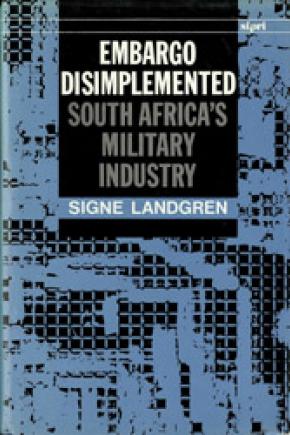Embargo Disimplemented: South Africa's Military Industry
This study of South African weapon programmes and imports of arms, components, and technology describes how a desperate buyer and eager suppliers have bent or pre-empted embargo rules. Signe Landgren explains the role of multinational corporations and South African investments abroad in the process of 'disimplementation' and reveals the parts played by France, the Federal Republic of Germany, Israel, Italy, the UK, and the USA as sources of military technology. She provides useful reference material for those studying the effect of arms embargoes or with a special interest in the buildup of the South African military industry. South Africa has now acquired sufficient technical expertise to allow it a degree of self-sufficiency, but this book highlights areas of its military industry which remain vulnerable.
Part I. Introduction
1. South Africa as a case study
2. Historical impediments to embargo implementation
Part II. The development of South Africa's military industry
3. The historical background
4. The organization and structure of the modern arms industry
Part III. The sectors of the military industry
5. The aircraft industry
6. The armoured vehicle industry
7. The missile industry
8. The warship industry
9. Infantry weapons and small arms
10. Military electronics and communications equipment
11. The CBW industry
12. Nuclear technology
13. South Africa's arms exports
Part IV. Implementation and disimplementation
14. Embargo implementation
15. Summary and conclusion
Appendices
Appendix 1. Sources and methods
Appendix 2. UN Security Council resolutions on the arms embargo against South Africa
Appendix 3. Selected bibliography
Appendix 4. South Africa's major weapons industry: The dependence on foreign military technology

